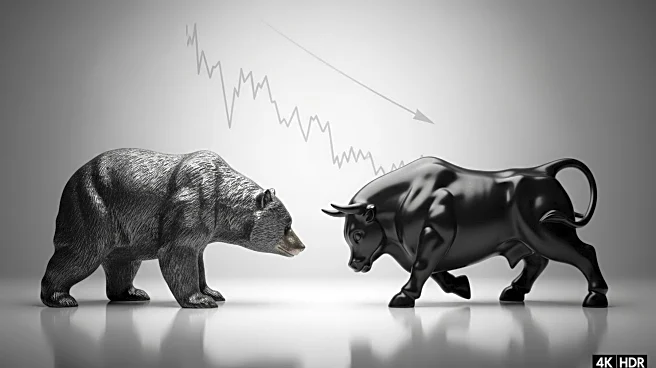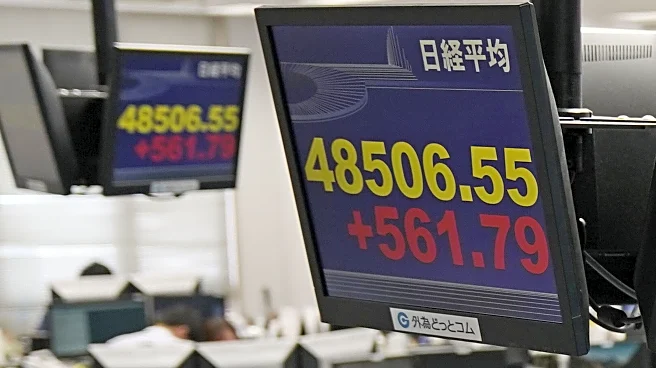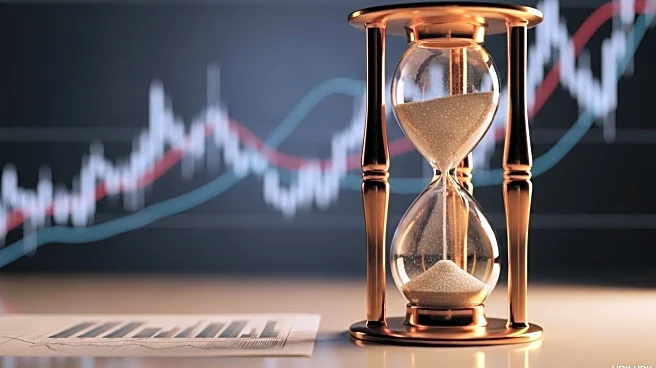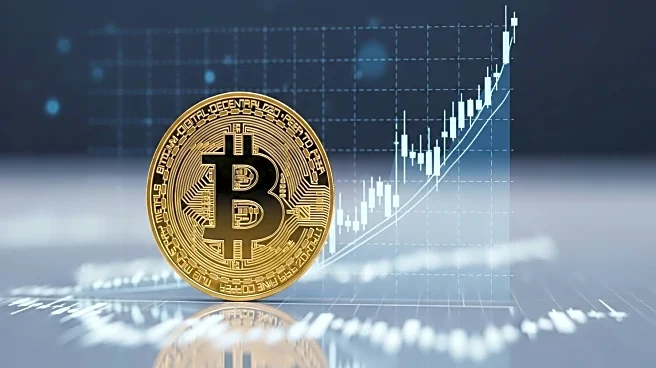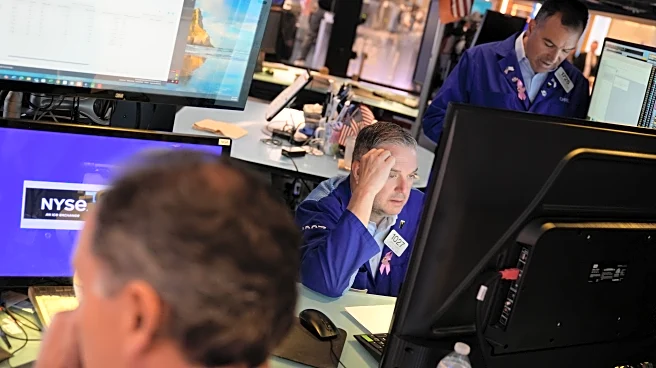What's Happening?
The 'debasement trade' has become a focal point on Wall Street, driven by geopolitical tensions, government spending, and the prospect of lower interest rates. This trend involves investors moving away from the U.S. dollar, which has seen an 8% decline against a basket of foreign currencies, and into assets like gold, cryptocurrencies, and stocks. Gold has surged over 50% in 2025, while Bitcoin has surpassed $120,000, reflecting a shift towards assets perceived as safer or more stable. The Nasdaq Composite has risen 19% year-to-date, and the Dow Jones Industrial Average has gained 9%. Analysts attribute this movement to a growing distrust in fiat currencies and concerns over government debt and inflation.
Why It's Important?
The debasement trade highlights significant shifts in investment strategies, with implications for U.S. economic stability and global financial markets. As investors hedge against the declining dollar, there is increased demand for alternative assets, potentially affecting traditional portfolio structures. This trend could lead to changes in how central banks and investors allocate resources, impacting the U.S. economy and its position in global trade. The move away from the dollar may also influence monetary policy decisions and interest rates, affecting borrowing costs and economic growth.
What's Next?
Wall Street is closely monitoring the debasement trend, with some firms adjusting their asset price targets. Citigroup has raised its forecasts for copper and tin, anticipating continued demand driven by currency concerns and economic policies. As governments and central banks respond to these shifts, further adjustments in investment strategies and asset allocations are expected. The ongoing de-dollarization theme may continue to drive investments in hard assets, with potential implications for global trade and economic policies.
Beyond the Headlines
The debasement trade raises ethical and strategic questions about the sustainability of current economic policies and the long-term impact on global financial systems. As investors seek alternatives to fiat currencies, there may be increased scrutiny on government spending and debt management. This trend could also influence cultural perceptions of wealth and investment, as traditional financial structures are challenged by emerging asset classes like cryptocurrencies.

